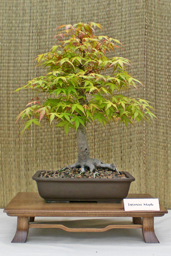Botany Basics - Part 4:
Growth controls
What uncanny sense of direction do roots and stems have when one tunnels through the soil in search of water and nutrients while the other lifts leaves into the light? At predictable times of the year, many species flower in response to day and night lengths. Do plants count the passing hours? Why does branching occur when stem tips are removed? It seems beyond reason that pruning plants creates more growth. What leads deciduous trees to shed their leaves in fall and awaken each spring? How do stems bend towards light? There is no end to questions on how plants function. They are reluctant to share closely guarded secrets. The study of functions, Physiology, deals with the inner workings of plants.
Biologists have found that plants produce special substances to regulate the processes of plant growth and development.
We call these substances hormones from the Greek word meaning “to excite”. Five plant hormones, or plant growth regulators have been identified in plants.
Growth Responses to Light
The first plant hormone to be discovered was the substance causing stems to grow toward light. This process is called Phototropism, (Greek tropos, to turn), and are growth responses to external stimuli. In stems illuminated from above, cells undergo equal rates of growth, resulting in vertical growth. But when lit from one side, stems change direction because cells on the shaded side grow faster than those toward the light. Phototropism is a common response in sun loving species. Most shade loving species display little or no phototropic response. The hormone controlling phototropism is named auxin, after a Greek word meaning “to increase”.
The chemical name for auxin is indole-3-acetic acid or IAA. Its principal function is to increase cell length, especially in stem and root tips, where it concentrates. When light strikes one side of a stem, auxin accumulates in the shaded side, causing the cells to grow at a faster rate and the stems bends towards the light. This allows the plants food factories (leaves) better exposure to harvest the light. Some leaf petioles also experience phototropism.
Growth of stem internodes, the space between leaves, is promoted by another hormone named gibberellin. The action of gibberellin on internode cells is also related to light intensity. In full sun, the hormone’s effect on growth is somewhat restrained. Thus, while the hormone promotes sufficient internode elongation to space the leaves, a squat growth form is achieved. In low light intensities, gibberellin becomes more active, causing internodes to stretch, elevating leaves to a position where they are better able to locate light. Shade loving species show no such reaction.
Growth Responses to Gravity
When roots and stems grow in opposite directions, they reflect contrary responses to earth’s gravitational field. Geotropism is the name given to this process. (Greek: ge, earth)
Most roots are positively geotropic, that is, they grow in the direction of gravity. Stems, for the most part are negatively geotropic, growing opposite to the gravitational pull. When a stem is placed on its side, the shoots soon turn and begin to grow upward. It is known that auxins collect on the underside, stimulating those cells to grow more rapidly than those on top. The mechanism of auxin migration is still a mystery to this day.
Geoptropism plays an indispensable role in seed germination. In the soil, the embyros of randomly scattered seeds point in many directions. But as soon as the roots and shoots emerge, their orientation is recognized and sets them on the right course. Imagine how impossible it would be for gardeners to have to plant each seed in a “correct position” for them to germinate and grow properly.
In the segments that will follow, we will explore the effects of the other hormones on plant growth.
Please click on one of the links below:

